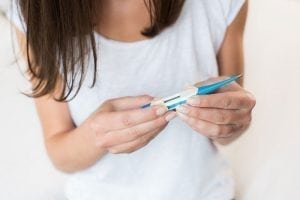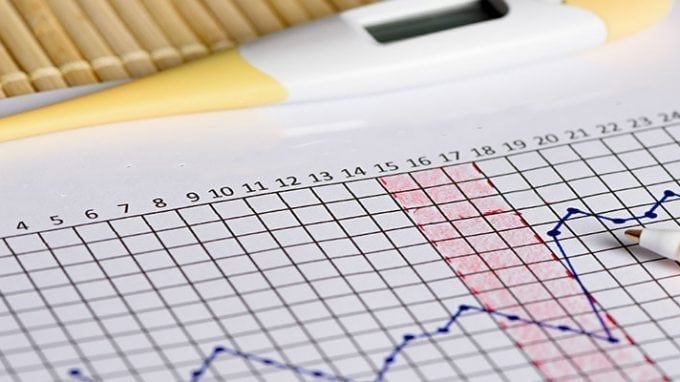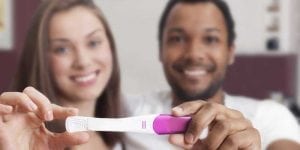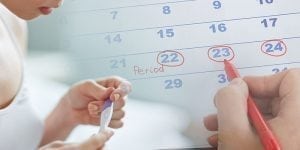When you are trying to conceive, you naturally want to increase the odds that you will become pregnant. One of the best ways to track your fertility is to practice charting your fertility cycles. It lets you know when exactly is the best time to try to conceive. Tracking your basal body temperature (BBT) is a good place to start.
Your basal body temperature is a strong indicator of ovulation. It is important to note that basal body temperature can tell you if you’ve already ovulated in a certain month, but cannot tell you when ovulation is coming. The best thing to do is to track basal body temperature in conjunction with checking your cervical fluid.
Why BBT?
Key hormones in the body control basal body temperature; the increase in BBT is caused by the rapid increase of progesterone in the system. The role that progesterone plays is that it is released in large quantities by the matured ovarian follicle, known as the corpus luteum, which formerly held the egg. It plays a vital component in preparing the uterus for pregnancy and for maintaining pregnancy. This BBT spike occurs when the egg is released and throughout pregnancy, and regresses to a normal state is an egg is not fertilized during a cycle.
What are the Advantages of Tracking Your Basal Body Temp?

• It allows you to determine when you ovulate each month
• It allows you to more effectively time when you should have sex to get pregnant
• It can help you to detect possible fertility issues, including those that involve ovulation or your luteal phase
• It helps you to assist your doctor because you can show him or her your charts, which can help your doctor to use the information when making a diagnosis
• It can possibly detect early signs of pregnancy
When you track your basal body temp, you may also want to check your cervical mucus. Doing both are good ways to estimate when you will ovulate, which will let you know when you should have sex if you are looking to conceive. Knowing the symptoms of ovulation can also be helpful.
How to Track Your Basal Body Temperature
The first step toward tracking your basal body temp is to buy a thermometer so that you can start charting your ovulation. There are basal body temperature thermometers on the market that are specifically geared toward women who are trying to get pregnant. It is a good to get a digital one because it beeps to alert you that it is finished taking your temperature.
To track your basal body temperature, you’ll collect temperature data. Each morning, before you get out of bed, check your temperature. Do this before you eat, drink, sit up or make any abrupt movements. Using a basal thermometer, take your temperature for the day and write down your BBT. Do this at the same time each morning.
Note that your temperature can fluctuate on a daily basis. Toward the end of your cycle, you should notice that your temperature rises .5 degrees to 1 degree and stays high. You need to look for this time when your temperature stays high. This will usually happen on the same day that you ovulate and should correspond with the time when your cervical fluid reached an egg white consistency.
Track your temperature and check your cervical fluid for a few months and you will soon notice a pattern. For a visual aid to help you better understand your cycle and fertility, you can create a line chart with the data you collect. Using a line chart, you’ll begin to know when ovulation takes place during your cycle so you can plan accordingly.
Creating a Line Chart
Here are the things you must note once you are ready to start creating a line chart for fertility tracking:
• On the first day you get your period, enter the date and day of the week under “Cycle Day 1.” Fill in the remaining dates of your cycle up until the first day of your next period.
• Use your basal body temp thermometer every morning before you even get out of bed to take your temperature. On your chart, mark a dot beside the temperature that matches your reading for the day. You may also want to note the time that you took your temperature.
• Check your cervical mucus on a daily basis. There are different kinds of discharge you will note each day: P would stand for “period,” D for “dry,” S for “sticky” and E for “egg white.”
• By the end of your cycle, you should be on the lookout for a day when your BBT rose 0.5 to 1 degree Fahrenheit and stayed at the high point. That is typically the day that you ovulated. Additionally, it should correspond with the last day you noticed that your cervical mucus was egg white in nature. The days when your cervical mucus is in that condition is when you are at your most fertile.
• Continue to track your symptoms for a few months to see if you notice an increased BBT and egg white cervical mucus at the same time during each cycle. That will give you a better chance of planning on which days to have sex to conceive.
Keep in mind that your best chance of conceiving is if you have sex at least every other day during the days when you are at your most fertile. Most couples are able to successfully get pregnant within five to six months of trying and you have better luck while tracking your BBT.




